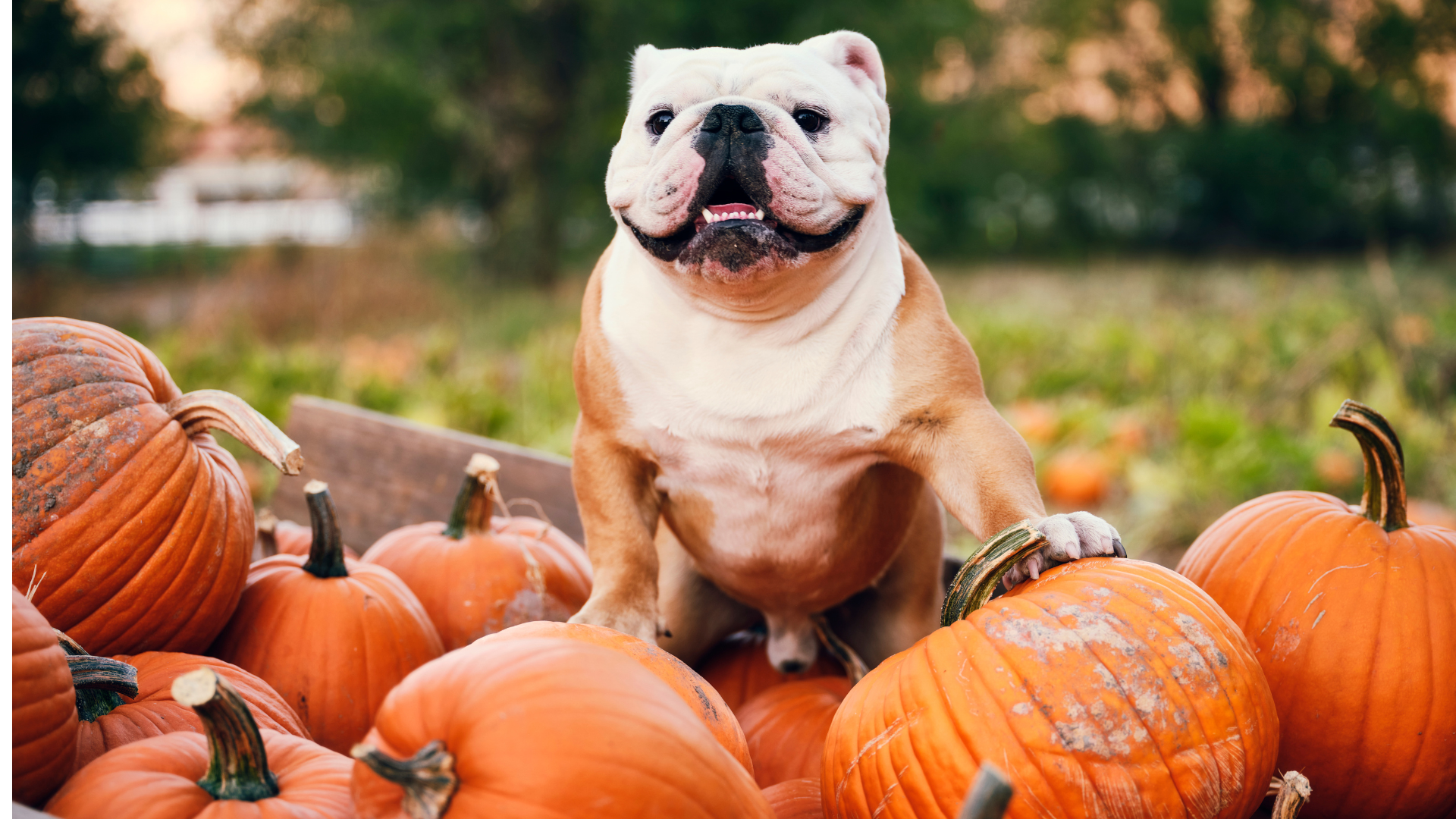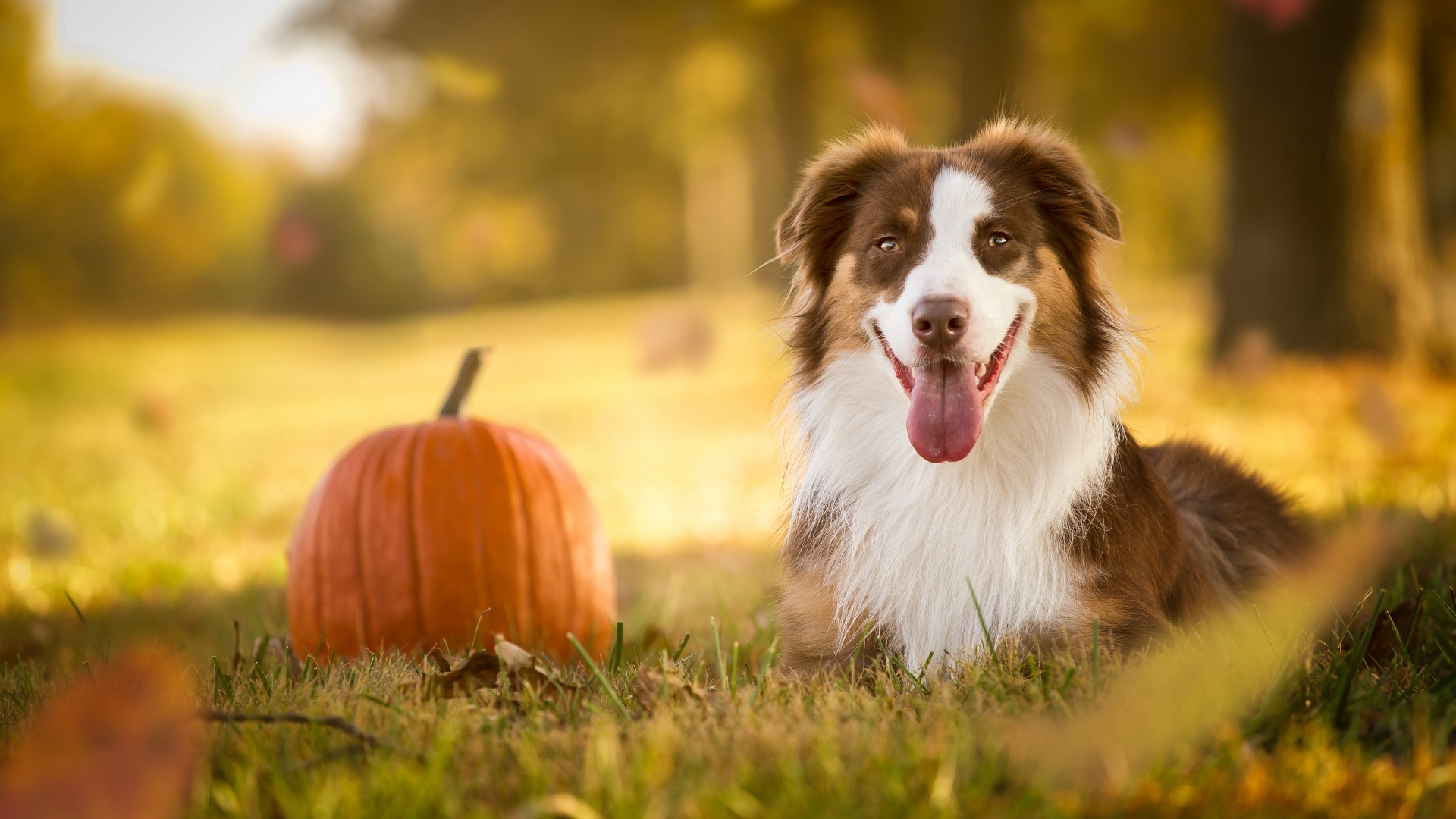
As we head into spooky season, you might be wondering, ‘Can dogs eat pumpkin?’ This delicious orange fruit is a fall favorite for lots of reasons, so we’re not surprised if you want to share it with your pooch. But is it safe to do so?
If you’ve run out of the best dog treats (or fancy making your own), pumpkin is a brilliant alternative that’s low in calories, high in vitamins and relatively inexpensive. However, only some parts of it are safe for canine consumption and it shouldn’t be fed in high quantities.
Below, our in-house vet Dr. Hannah Godfrey has answered all of your questions about feeding pumpkin to dogs - from how to serve it safely to how much they’re allowed to eat. To hear her expert advice, keep on reading.
Can dogs eat pumpkin and is it good for them?
In short, yes, but only the pulp and the seeds! Pumpkin is packed full of important vitamins and minerals that can benefit your dog in a number of ways. It contains Vitamins A, C and E, Alpha carotene, Calcium, Iron, and Lutein, which (among other things) help to improve your pooch’s immune system, strengthen their bones and teeth, and keep their skin, coat, and eyes healthy.
It's low in calories and filled with lots of fiber, making it the perfect treat should your pooch need to lose a few pounds. Its high fiber content could also be the reason why so many owners swear by it when their pet has digestive issues, such as constipation or diarrhea. A tablespoon of canned pumpkin, which is mixed in with their normal food, could make them feel right as rain in no time.
Dr. Godfrey says: "Dogs can safely eat the pulp and seeds of a pumpkin, as long as they are unseasoned. Salt and spices that can be used to make the pumpkin flesh or toasted pumpkin seeds more appetizing to humans can upset a dog’s stomach, so it’s important to offer them plain. The stalk and rind are tough, so they pose a choking risk as well as being hard to digest, and the rest of the pumpkin plant can cause irritation because they’re coated in bristles."
Will eating pumpkin cause any problems for your dog?
You might think that there’d be no harm in giving your canine a raw pumpkin to chew on, right? Wrong. The leaves and the stem of this hearty vegetable are covered in prickly hairs, which could irritate or harm your dog if they’re chewed or swallowed.
The tough exterior shell of a raw pumpkin can also prove to be a problem, as it isn’t easy for dogs to digest, so it’s advised not to give them a raw pumpkin - no matter how much it resembles a small ball-like chew toy.
Despite this, canned plain pumpkin is safe for your dog to enjoy. But this doesn’t apply to all types of pumpkin-based products.
Any type of pumpkin pie mix or blend should be completely avoided as it contains spices such as cinnamon or nutmeg, which can be toxic for puppies and cause digestive issues in older dogs.
Another thing to keep in mind is the quantity. Too much pumpkin can actually be quite dangerous due to the high levels of beta carotene, which a dog’s body will convert into Vitamin A - which in large quantities can be highly toxic.
Dr. Godfrey says: "Pumpkin pulp and pumpkin seeds are safe for dogs to eat as long as they’re not seasoned or prepared with other ingredients. However, every dog is different, and pumpkin might not agree with your dog. Therefore, it’s best to offer a small amount first to make sure their gut isn’t sensitive to it."

How much pumpkin can a dog eat?
As with any health remedy or introduction of any new food, we always recommend you have a chat with your vet first. They'll be able to rule out any underlying conditions and recommend whether any other dietary changes need to be made to your dog's diet.
We recommend you start off slowly and see how your dog reacts, especially given that pumpkin is high in fiber, which could cause digestive issues in dogs with sensitive stomachs.
Funnily enough though, the soluble fiber content in pumpkin can come in handy if your dog has diarrhea because it absorbs water and helps bulk up their stool. Fiber also acts as a prebiotic which stimulates the growth of healthy bacteria and kills harmful bacteria, so a small amount of pumpkin can help rebalance the gut.
As luck would have it, this miracle orange vegetable works wonders for serious constipation too, acting as a natural laxative and softening your dog's stools.
Dr. Godfrey says: "If your dog has never eaten pumpkin before, it’s best to start by offering them a tiny amount, the size of your fingernail, then monitoring them to make sure they don’t have an upset stomach.
"Once you know that they can eat pumpkin without it upsetting their guts, you can safely offer a tablespoon or two daily if you wish. However, remember that your dog’s nutritionally complete food should be 90% of their daily calorie intake, so if you’re giving lots of different treats and titbits, they could gain weight or miss out on the nutrients that they need. "
How can I feed my dog pumpkin?
If you find that your four-legged friend is getting tired of the treats you pick up for them from your local store, then pumpkin (prepared the right way) can make for a good substitute. There are plenty of recipes for homemade dog treats available online, but here’s a few simple suggestions for your dog to try that includes pumpkin:
- Suggestion 1 - One of the most fun ways for your dog to enjoy pumpkin, is to smush the pulp into their favorite Kong toy.
- Suggestion 2 - Fresh pumpkin can be steamed and mashed to make a delicious topping on their regular food.
- Suggestion 3 - It can be used to make dog-friendly “cookies” by mixing 2/4 cup of pumpkin puree, 2 ½ cups of oat/whole wheat flour, 2 eggs and 3 tbsps of peanut/almond butter. Bake for 30 minutes on a lined baking sheet.
Dr. Godfrey says: "Adding pumpkin that’s been softened through roasting or boiling to puzzle toys or snuffle mats can be a great way to keep your dog active and mentally stimulated. Just make sure it’s cooled after cooking."
As with any new food - whether that be treats or main meals - it’s advised that you consult with your vet first to ensure that it is safe for your dog.
You might also want to read: Can dogs eat walnuts?







